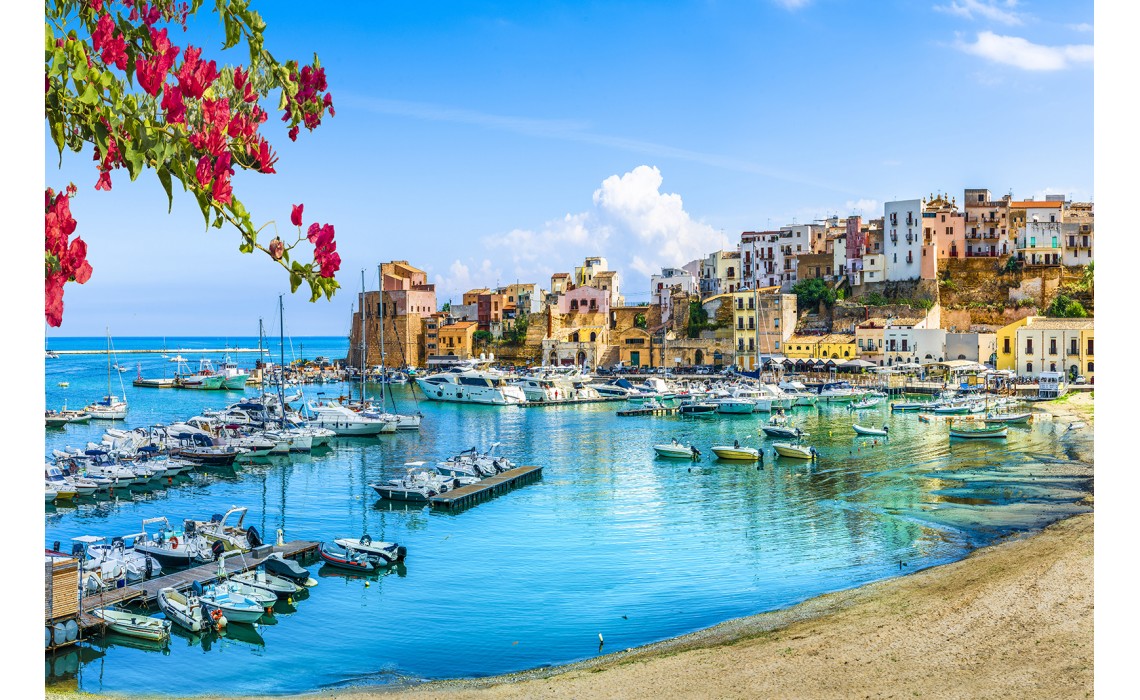
Sicilian extra virgin olive oil
Sicily, is a land of myths and legends, of art and history, traditions and knowledge handed down over the centuries. However, there is one element as a common thread: olive oil. Sicily is the mother of one of the most famous oils in the world, characterized by unique and prestigious characters. It ranks third, after Puglia and Calabria, for the amount of extra virgin olive oil produced, accounting for about 9% of all national production, and is one of the elements that most support the local economy.
Geography
The climate of Sicily is generally characterized by long and hot summers with mild and short winters. The southwestern coast is particularly affected by African currents, so summers can often be remarkably hot. In general, the warm season lasts from the end of April to late October. This involves a harvest of olives in the months from October to December even if, usually, November is the best time. All this does not exclude snowfalls that occur above 900-1000 meters. The same goes for the northern and northeastern cold air currents that can cause snow in the hills but also coastal cities such as Palermo and Messina.
Against this, extra virgin olive oil from Sicily is affected by the climatic variations of the different territories, generating multiple sensory and organoleptic nuances. The olive groves are present both on the coastal strip and up to 1000 meters above sea level, giving rise to various types of crops.
The production of oil
One of the greatest characteristics of Sicilian oil is the choice, during the early stages of processing, to avoid the use of machinery as much as possible. Of course, the quantity of the harvest suffers, resulting in a smaller volume of raw material, but the quality is excellent. The milling phase is also the subject of particular attention. The techniques differ according to the extraction area. The most used are mechanical milling, which guarantees low temperatures for the oil, the well-known “cold extraction”, and classic milling using stone millstones.
Biancolilla is the most widespread cultivar in the area of Trapani, Palermo, and Agrigento. We are located in the western area of the island, a land of green oil tending to yellow with golden hues. The taste is delicate with some spicy notes accompanied by hints of fruit and almonds.
Cerasuola is a very wide variety throughout the island but especially in Trapani and Palermo. The flavor of the oil remains strong with some spicy and herbaceous and slightly bitter notes. It is considered one of the healthiest oils thanks to the high percentage of beta-carotene, unsaturated fats, and tocopherols.
The Girraffa olive is the oldest known species, today it is very present in the western area of Sicily. It is an olive that ripens very early and is harvested in the first ten days of September or even in August. The oil is sweet and fruity with a bitter aftertaste.
The Nocellara del Belice and the Nocellara Etnea, despite the same name, are the first original from the southwest side of Sicily while the second in the central-eastern part. In 1988 Nocellara del Belice obtained the DOP certification. The original oil of this cultivar varies from yellow to deep green and has low acidity and a bitter and spicy taste. Nocellara Etna is much more difficult to grow but its sweet and fruity oil is much appreciated.
La Moresca is an olive that does not return a large amount of oil despite producing medium-large fruits and is found conspicuously between Ragusa, Enna, and Catania. The oil has a low content of oleic acid, hints of almond and ripe fruit, and is fruity, lightly bitter, and slightly spicy.
Ogliarola Messinese is the most widespread in Sicily with crops present both near the coasts and in the Nebrodi and Peloritani Mountains. The fruits have a lot of pulp managing to return a yield of 15% of oil. The oleic acid content is 75%, and the polyphenols are also high. The oil deriving from Orgiarola is medium fruity with spicy-medium bitterness.
Santagatese can be found on the Tyrrhenian coast with an increase in olive growing in Sant’Agata di Militello. The oil of this olive is medium-intense fruity with a bitter and slightly spicy note.
Tonda Iblea produces one of the highest-quality oils. Also in this case it is a medium-intense fruity oil with bitter and spicy notes well balanced between them.

